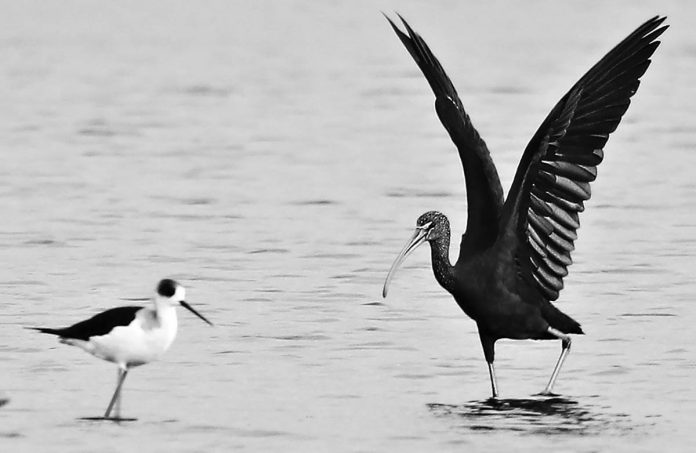
ILOILO City – The Department of Environment and Natural Resources (DENR) in Western Visayas is asking for public support, especially from communities near wetlands, to help in the preservation of areas where migratory birds thrive.
Assistant Regional Director Livino Duran said some wetlands in the region serve as stopovers of migratory birds.
“We have continuous monitoring of our wetlands because other migratory birds already become residents of Western Visayas,” he said.
One of the latest migratory birds documented was the Glossy ibis (Plegadis falcinellus) in the wetlands of Barangay Hinactacan, La Paz district on Nov. 29, 2020.
It was captured by the camera lens of Rachel Casio of the DENR Conservation and Development Division.
“After three years, another first sighting of a rarely seen migratory bird in the country was recorded in the Hinactacan wetlands,” the DENR reported.
The Glossy ibis is a wading bird with a global range. Is the most widespread of all ibis species but very rarely observed in the Philippines.
At a distance, the Glossy ibis may seem dark. A closer look and good lighting, however, would reveal stunning colors of deep maroon, emerald, bronze, and violet.
Since these birds are long-legged with long bills, these are sometimes mistaken as Eastern curlew. They also forage quite close together in open fresh marshes but are also seen in brackish and saltwater marshes, mudflats, mangrove swamps, wet agricultural fields, lakes, shallow rivers, and pond edges.
One amusing behavior of the Glossy ibis is that during courtship, it bows to one another, preening each other (called allopreening), and touching their bills together, rattling them quickly while cooing.
Glossy ibis is known to breed in scattered sites in warm regions of Europe, Asia, Africa, Australia, and the Atlantic and Caribbean regions of the Americas.
Duran said some migratory birds have opted to stay because they have already adopted the habitat and food is sufficient in the community.
Also, the awareness of the public not harming them is already high, thus the migratory birds already mingle within the community, he added.
“Most of our wetlands are near communities. If they (migratory birds) are left unharmed, more or less they will just adapt to the situation,” he added. (PNA/PN)






